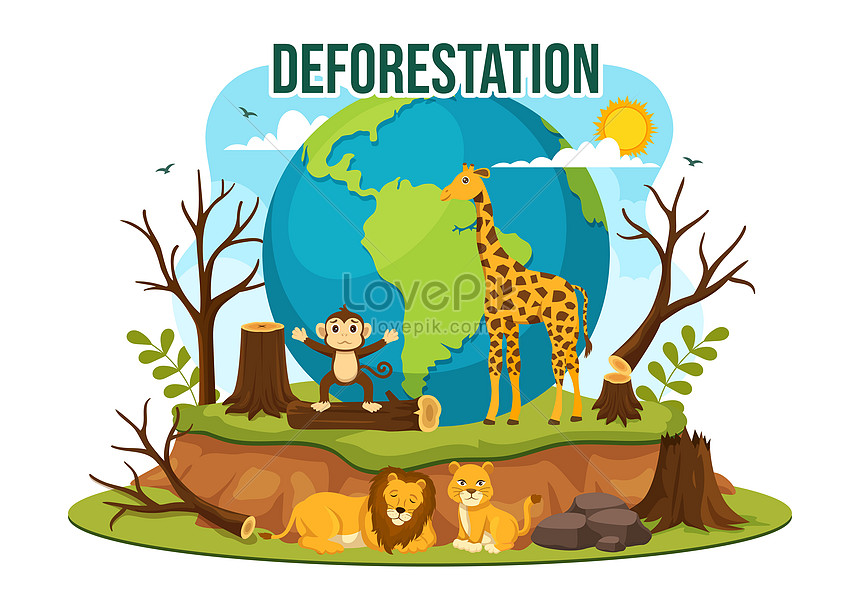Forests are cleared for various reasons, influenced by multiple
factors such as high crop prices, government subsidies, access to roads,
increasing population, and insecure land ownership. These elements play
different roles in different regions. As countries become more
integrated into the global economy and population pressures rise,
especially from regional migrations, traditional farming methods are
often replaced with less sustainable practices CITATION All85 \l 4105
(Allen, J. C., & Barnes, D. F., 1985).

Deforestation, or the large-scale clearing of forests, occurs due to
several main causes:
Main Causes of Deforestation
| Reasons |
Descriptions |
Pictures |
|
|
Agricultural Expansion |
This is one of the leading causes, where forests are cut down
to create space for crops and livestock. It includes both
extensive commercial agriculture and small-scale subsistence
agriculture CITATION Ben08 \l 4105 (Bensel, 2008).
|
 |
| Logging |
Trees are cut down for timber, paper, and other wood products. Both
lawful and unlawful logging play a big role in deforestation (Bouza Herrera, 2014). |
 |
| Infrastructure Development |
Building roads, highways, and urban areas often involves clearing
forests. This also includes mining and constructing dams
(Library, n.d.) |
 |
| Fires |
Forest fires, whether natural or caused by humans, can lead to
significant loss of forests. These fires are a major source of
carbon emissions in the Amazon. The expansion of mechanized
farming in the Amazon has increased the amount of deforested
areas. From 2003–2007, fires associated with deforestation made
up over 40% of fire detections. In areas with active
deforestation, like In Bolivia and the Brazilian states of Mato
Grosso, Pará, and Rondônia, these fires made up 84% of all
fires. Fires used for deforestation can continue for several
years, making land conversion more complete
(Bensel, 2008).
|
 |
| Climate Change |
Climate changes can indirectly cause deforestation by making droughts and
pest infestations more frequent and severe, which harms forests
(Karamage, 2016) |
 |
| Fuelwood Harvesting |
In many parts of the world, forests are cleared to supply firewood and
charcoal for cooking and heating. There were significant
concerns about a ‘Fuelwood shortage' in the 1970s and 1980s.
People worried that using woodfuel in developing areas such as
Africa, Asia, and Latin America would cause tropical
deforestation and woodfuel shortages. However, most woodfuel
demand is actually met by trees and shrubs that are not in
forest areas. In some places, such as the Philippines, the
commercial demand for woodfuel is still seen as a main cause of
deforestation. On Cebu Island, the need for firewood and other
wood products is encouraging reforestation, contrary to the
belief in environmental decline
(Bensel, 2008).
|
 |
| Energy Challeges and Popluation Growth |
Deforestation is driven by energy challenges in developing nations.
Rising oil prices reduce the possibility for fossil fuel energy
and erode foreign exchange reserves. Population growth,
agricultural expansion, and wood harvesting are also linked to
deforestation. Recent estimates of deforestation rates between
1968 and 1978 in Africa, Latin America, and Asia show
significant correlations with population growth, wood fuel
production, and wood exports
(Allen,
J. C., & Barnes, D. F., 1985).
|

|
|
Return to the top
|








